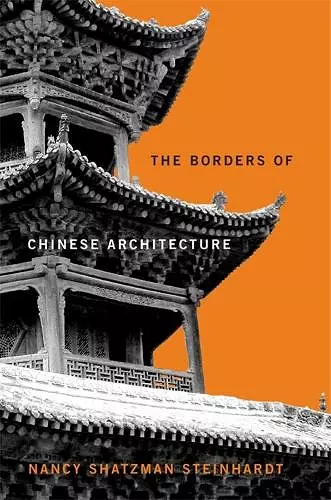The Borders of Chinese Architecture
Nancy Shatzman Steinhardt author
Format:Hardback
Publisher:Harvard University Press
Published:25th Mar '22
Should be back in stock very soon

An internationally acclaimed expert explains why Chinese-style architecture has remained so consistent for two thousand years, no matter where it is built.
For the last two millennia, an overwhelming number of Chinese buildings have been elevated on platforms, supported by pillars, and covered by ceramic-tile roofs. Less obvious features, like the brackets connecting the pillars to roof frames, also have been remarkably constant. What makes the shared features more significant, however, is that they are present in Buddhist, Daoist, Confucian, and Islamic milieus; residential, funerary, and garden structures; in Japan, Korea, Mongolia, and elsewhere. How did Chinese-style architecture maintain such standardization for so long, even beyond China’s borders?
Nancy Shatzman Steinhardt examines the essential features of Chinese architecture and its global transmission and translation from the predynastic age to the eighteenth century. Across myriad political, social, and cultural contexts within China and throughout East Asia, certain design and construction principles endured. Builders never abandoned perishable wood in favor of more permanent building materials, even though Chinese engineers knew how to make brick and stone structures in the last millennium BCE. Chinese architecture the world over is also distinctive in that it was invariably accomplished by anonymous craftsmen. And Chinese buildings held consistently to the plan of the four-sided enclosure, which both afforded privacy and differentiated sacred interior space from an exterior understood as the sphere of profane activity. Finally, Chinese-style buildings have always and everywhere been organized along straight lines.
Taking note of these and other fascinating uniformities, The Borders of Chinese Architecture offers an accessible and authoritative overview of a tradition studiously preserved across time and space.
An exceptional book that significantly increases our knowledge about the extent of Chinese architecture across a land whose borders have been fluid over the millennia. No one in the West knows this material better than Nancy Steinhardt, who brilliantly weaves Korea and Mongolia into the story of the development of Chinese architecture. Her work is rooted not only in written records and visual materials, but in personal exploration of the sites themselves. Her mastery of the Chinese building system, both above and below ground, and her command of the full range of built structures is outstanding. -- Ronald G. Knapp, author of Chinese Houses: The Architectural Heritage of a Nation
A fascinating look at architectural examples from China and neighboring regions that are related to China’s long building tradition but not usually included in Chinese architectural history. Steinhardt demonstrates that the cultural ‘boundary’ of Chinese architectural traditions and practices was actually much more porous than expected. By putting border crossing into sharper focus, she argues for a much broader understanding of Chinese architecture as a dynamic cultural expression across East Asia, and even beyond. A delightful treat and indispensable reference for anyone interested in border-crossing issues in art and architectural history. -- Wei-Cheng Lin, author of Building a Sacred Mountain: The Buddhist Architecture of China’s Mount Wutai
Steinhardt brings an authoritative perspective to answering a fascinating question: why has Chinese architecture remained a stylistic constant for 2,000 years?…[A] scholarly and provocative read about the cultural significance (and enduring power) of non-Western architectural ideas. -- Mark Favermann * Arts Fuse *
ISBN: 9780674241015
Dimensions: unknown
Weight: unknown
448 pages